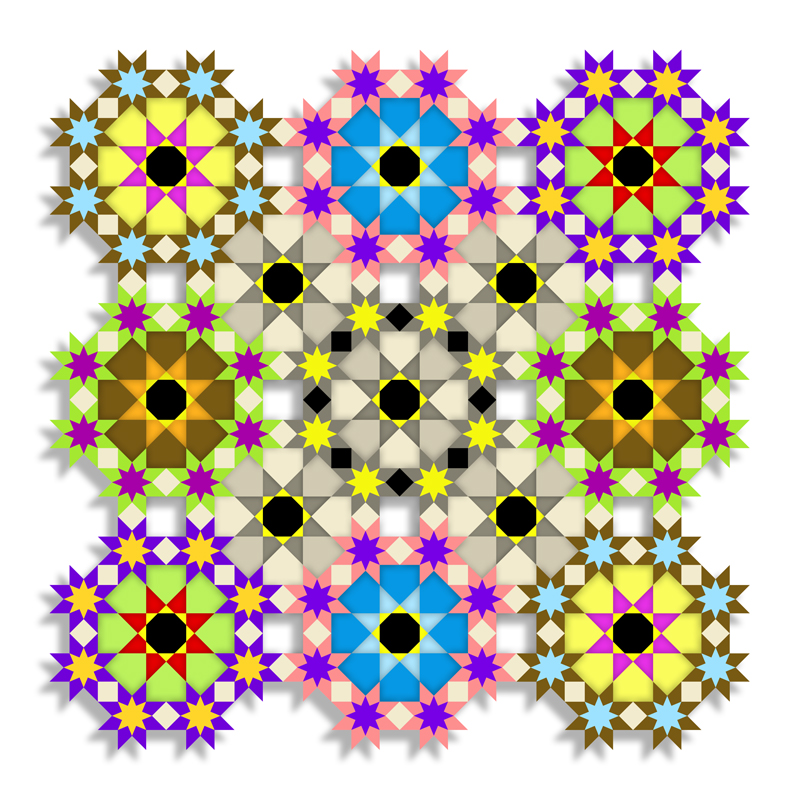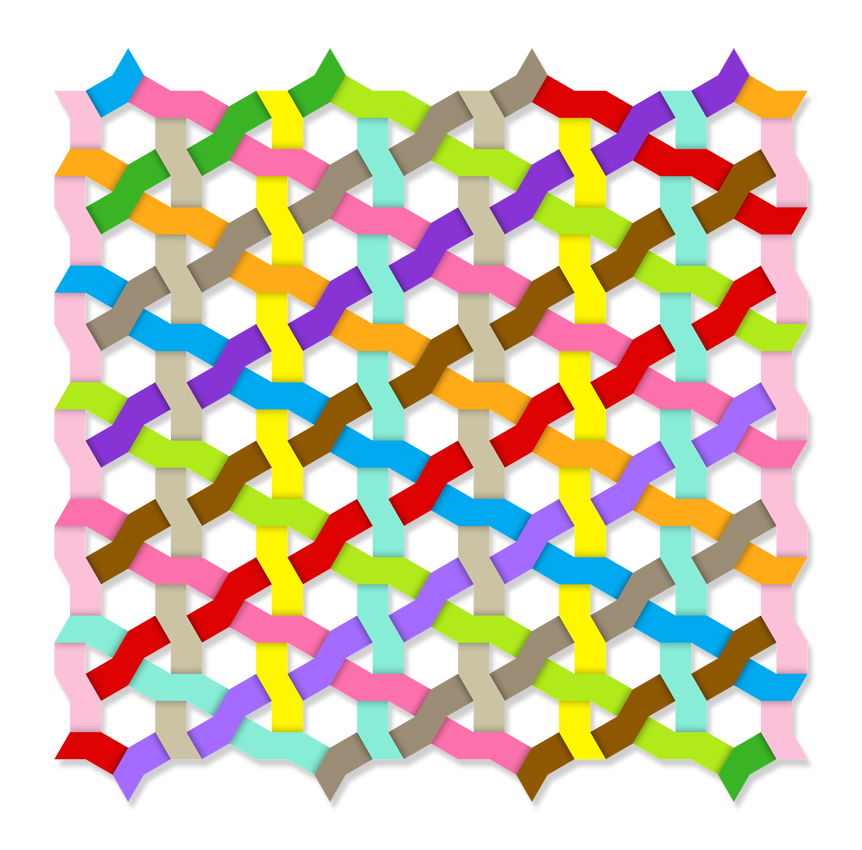click image to enlarge image (except mobile devices)

uv cured inkjet on cut-out composite aluminum
edition of 3, dimensions variable (overall dimension 48″ x 48″)
This work is inspired by Islamic art in my own modern way. It is constructed with nine rings of eight Khatim-Sulayman stars. Khatim-Sulayman stars are eight pointed stars that first began to appear in Islamic art in the middle ages. Khatim-Sulayan means “seal of the prophets” and are known to denote life, from birth to death. The eight pointed stars would continue to appear symbolically in spiritual traditions in many cultures around the world through history.
Here, each star is constructed with eight kites. When put together, the eight kites inscribe another eight pointed star in its center. Inscribed within this ring of eight, eight pointed stars, is a large eight pointed star with an octagon at its center. Also, inscribed in the interstitial spaces between the nine rings are four more large eight pointed stars and octagons.




